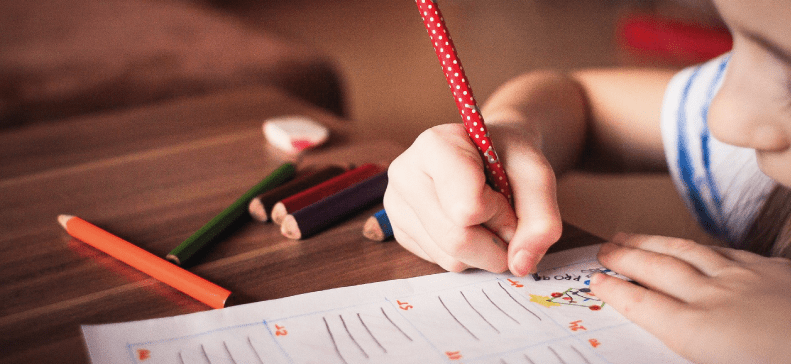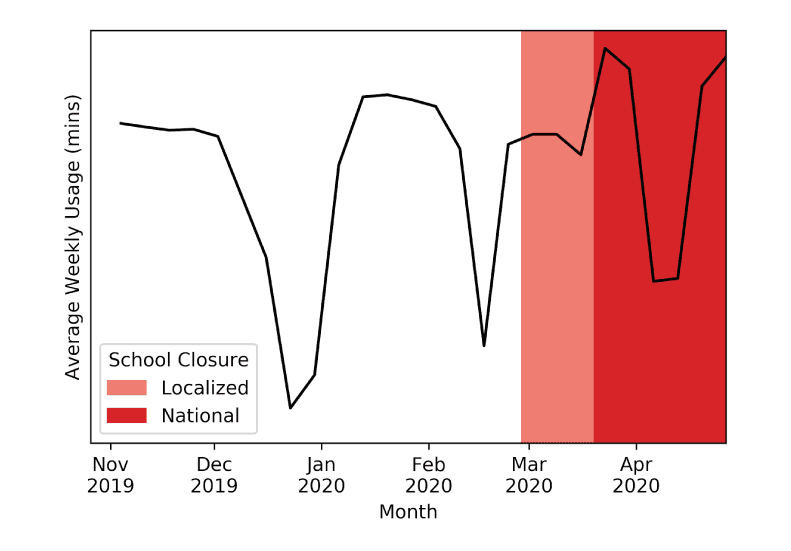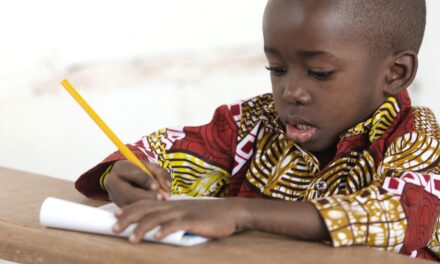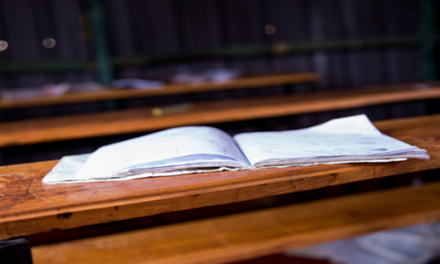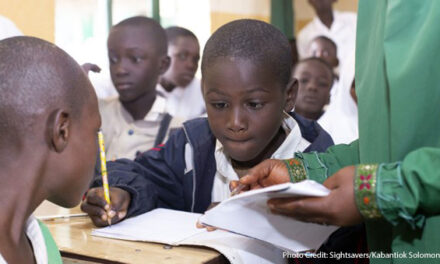This article was written by Dr Junaid Mubeen, Director of Education at Whizz Education and originally published on the Whizz Education website on 13 May 2020.
The disruption caused by Covid-19 has given nourishment to a new rallying cry for educators. On social media and beyond, the #LearningNeverStops mantra – and several others like it – serve as an urgent reminder of the importance of continuity in learning. The heroic efforts of teachers, and parents-turned-teachers, are going some way to ensuring students continue to learn and develop even in the face of school closures and social distancing. But when short-term emergency planning makes way for more strategic consideration of the purpose and structure of education, we may find that the things we took for granted around our schooling models are no longer appropriate for our times.
New pandemic, familiar disruptions
The global pandemic may be, to use a worn-out term, unprecedented for our generation. Yet every year, in every education system on the planet, the same woeful tale of disrupted learning plays out in predictable fashion. Sustained closures are, it turns out, a routine fact of schooling life. Every summer, the climax of the academic year segues into a prolonged break. Over a period of several weeks, even months, students typically switch off from formal study as they retreat to their holiday routines.
Unknowingly, they surrender so much of the hard-earned knowledge they have acquired through the schooling year. Research into the ‘summer slide’ places this loss at 2-3 months, with the most precipitous decline felt in mathematics.
Our own research at Whizz points to a 2.6-month reduction in maths knowledge over an inactive summer period. The start of the academic year is invariably anchored to a herculean narrative of clawing back this lost learning.
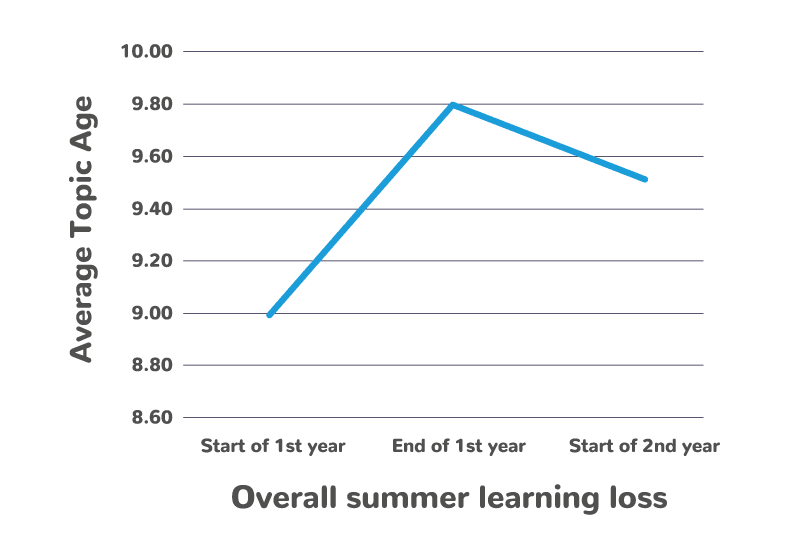
A study of 681 UK students who were inactive on Maths-Whizz over the summer, and subsequently reassessed in the new academic year, showed that their Maths Age declined by an average of 2.6 months in each topic.
Visualising loss of learning
Covid-19 is still in its infancy, but already it is amplifying the threat of learning loss as students worldwide struggle for access to basic education.
At Whizz we are able to track students’ access and quality of learning in mathematics through our Maths-Whizz virtual tutoring platform. As students interact with the tutor, it generates analytics in real-time, as an automatic by-product of their learning. Our longitudinal Usage data (where Usage is defined as time-on-task in Maths-Whizz) brings into focus the two intervening forces of holiday learning loss and what we might term ‘Covid learning loss’.
Here, for example, is a time-series plot showing the average weekly Usage on Maths-Whizz among students in the UK. Dates for localised and national school closures are taken from Unesco. Usage numbers have been omitted as the focus of analysis is on directional trends.
Prior to Covid-19, there were two unmistakeable troughs corresponding to the Christmas holiday and February half-term respectively, as students directed their attention away from their studies. Since the advent of school closures, a fluctuating pattern has persisted, mediated in large part by a third dip over the Easter break in April. More encouraging is the revival of student activity on Maths-Whizz in recent weeks, with Usage surpassing even its pre-Covid levels.
As schools look to online delivery models for instruction, Maths-Whizz is poised for greater uptake as its design is optimised for this medium (in contrast, say, to ill-fated attempts to deliver synchronous lessons via Zoom to thirty primary students at once).
While adoption levels vary between different territories, the same story has emerged elsewhere: a steady uptake in virtual tutoring, mediated by precipitous drops during holiday periods. Covid-19 poses very real dangers to students’ learning, but these dangers are already a natural consequence of the schooling calendar. The persistent threat to students’ learning resides in the conventional view of holiday periods as a wholesale ‘break’ from education.
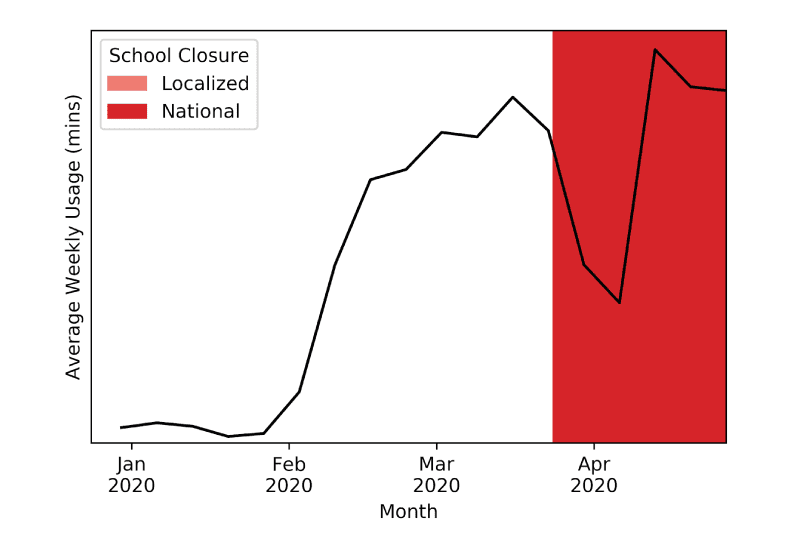
New Zealand: Usage trends before and after the start of the academic year (early February) are consistent with other territories. The April drop is explained by the Easter break.
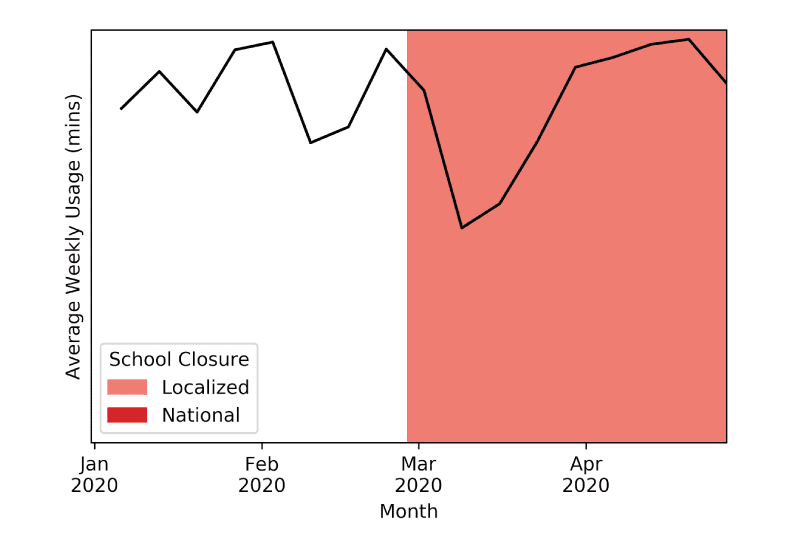
United States: The noticeable drop in March corresponds to spring break, which also coincided with the advent of school closures. Usage has picked up as many schools have taken advantage of our support through Covid-19.
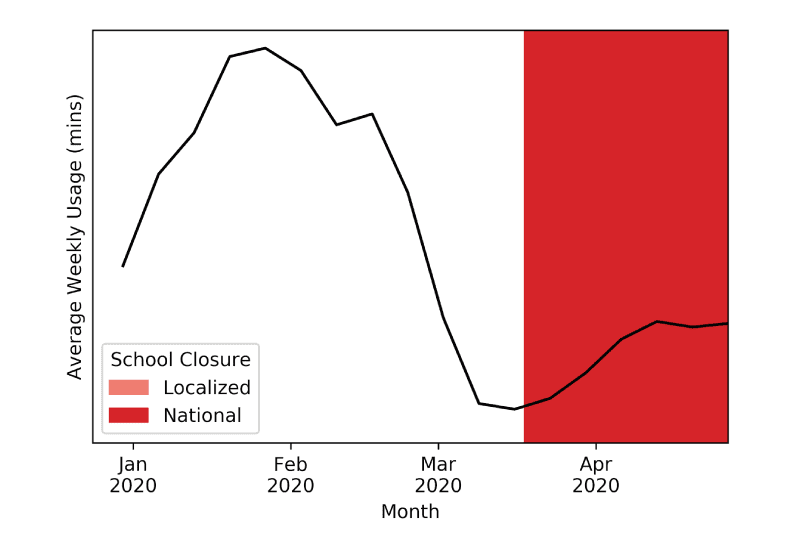
Thailand: The pre-closure decline is in line with the summer vacation. Usage is rising as Maths-Whizz is made available in remote summer camps.
Bridging the digital divide
Learning losses are not distributed evenly among students. Students from more affluent backgrounds are more likely to enrol in summer camps, and they have more ready access to learning resources. Social distancing has placed newfound importance on the internet as a delivery vehicle for education. Digital technologies have baked into them the potential to avert learning loss by affording students access to quality learning content tailored to their needs and preferences. The upturn in Usage on Maths-Whizz bears testimony to the flexibility that comes with online learning, accessible on any internet-enabled device.
These same technologies, however, risk widening the digital divide, with many families unable to afford or access online learning content. As a 2018 PISA analysis explains, school readiness for digital learning unfolds in three phases. The first is the most essential layer of access. In resource-constrained contexts such as rural Kenya and the Democratic Republic of Congo, Usage on Maths-Whizz has been decimated as students’ only access to online learning has, to date, been available through purpose-built ICT labs in schools. When schools close, so do the avenues to these students’ education.
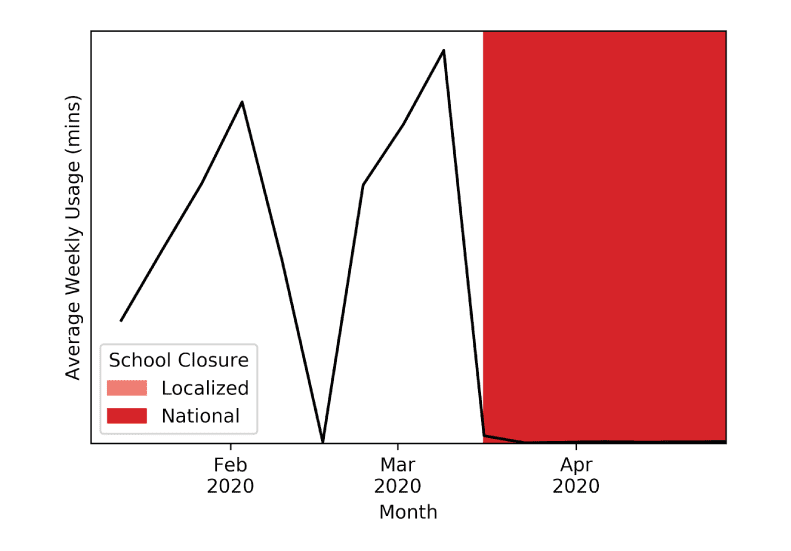
Rural Kenya: School closures – first due to holidays and then Covid-19 – decimate online learning as students rely on ICT labs for access
The barrier of access is felt even in more developed contexts. In the UK and US, for example, we see huge variations in Usage levels, within and between schools. These contexts reveal their own instances of the digital divide. Many of our partner schools in low-income areas, where families lack access to the internet, are observing a significant downturn in Usage. This is why the first phase of response efforts has centered, in many parts, on infrastructure – enabling internet access for the most marginalised groups (those on free school meals, for instance).
Whizz’s own commitment to ensuring learning never stops begins with an effort to expand access to virtual tutoring. In many contexts, this has translated into providing additional licenses to schools at no additional cost. In others, like Kenya and DRC, we are working with partners to overcome infrastructural bottlenecks by making Maths-Whizz accessible on affordable smartphones. In Thailand, Maths-Whizz is being offered as a remote learning solution for summer camps. Each context requires its own adapted implementation.
Even as we confront challenges of access, our approach is rooted in the other two phases of school readiness mentioned in the PISA report: addressing the digital use gap, which relates to purposeful, guided use of online content and the school digital gap, which relates to ‘the capacities and capabilities of each school to provide individualized, or suitably levelled and sequenced, digital learning for students; to promote and monitor engagement with these materials; and to provide feedback that helps maximize learning outcomes.’
Across all territories, we have created remote professional development offerings for teachers. A webinar series, led by our central team of education experts, has been launched for both parents and teachers. In Kenya teachers are able to access, through their smartphones, courses on classroom instruction, which will be supported by remote workshops with local experts. A suite of ‘flat’ maths content including worksheets and worded problems have been disseminated via teacher WhatsApp groups, to coincide with the Kenya Institute of Curriculum Development (KICD) home learning schedule. Teachers have then cascaded these materials down to parents through their own local networks. In the UK, we have already made many of our award-winning Teachers’ Resources available on BBC Bitesize, and we are in informal discussions with KICD to include some of this content with their televised home learning curriculum. In the DRC, we are also pursuing the goal of granting teachers access to the Maths-Whizz tutor (again, via affordable smartphones) to enhance their content knowledge.
Learning must never stop in a post-Covid world
These examples are a snapshot of how Whizz is responding to the urgent needs of Covid-19. They fit into a wider effort among educators to ensure all students, and especially the most vulnerable, are supported even during this period of disruption. When the dust hopefully settles on Covid-19, the world will have undergone a seismic shift. The things we take for granted – our health, our livelihoods, our social interactions – will face microscopic examination. So too will our mechanisms of schooling. If we address short term needs with an eye on future needs, we can prepare schools for disruptions to come by making online delivery of quality education a staple component of business-as-usual schooling.
The accepted convention of extended school holidays has condemned many students to a disrupted learning experience. Before Covid-19, the education sector was only too willing to allow learning to stop and start under the guise of extended holiday breaks. Year-round schooling has never before been given serious consideration. If not now, then when?
There are no inevitabilities around learning loss; only conscientious choices for educators and policymakers. When we take stock of the disruption to students’ learning, let us remember that learning loss is not a new phenomenon. It is among the oldest pain points of a schooling model that assumes learning can be turned on and off without consequence. Let us resolve to ensure that #LearningNeverStops, not only during this pandemic, but also in the years ahead.

